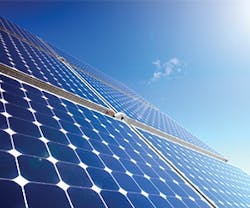PV Advancement Could Improve Efficiency
Perovskite solar cells have been of interest in the energy community since their initial development because they are easy and inexpensive to fabricate. Initially, however, that enthusiasm was curbed due to their inefficient energy production. When they were developed in 2009, they could only convert photons to electricity at a rate of 3%.
However, perovskite solar cells have improved to 22% efficiency today, making it the most rapid improvement in efficiency of any other material to date. This enhancement also brings its efficiency much closer to that of silicon solar cells.
The fervor surrounding the possibilities of perovskite solar cells recently became even more substantial after researchers at the Department of Energy’s Lawrence Berkeley National Laboratory found a specific characteristic of a perovskite solar cell that could extend beyond its current capabilities and achieve up to 31% efficiency.
“This was a big surprise. It shows, for the first time, that perovskite solar cells exhibit facet-dependent photovoltaic efficiency,” says Alexander Weber-Bargioni, one of the authors of this research.
With perovskite solar cells, the problem has always been that on an individual basis, some of a cell’s facets work well and other work poorly. In the past, currents have flowed towards the bad facets, meaning inefficient results. However, the material can be manipulated so only the highly efficient facets would be put to work. This would resolve the inefficiency problems that researchers have long faced.
In terms of practicality, there are more steps needed to make this type of efficiency work consistently. Nonetheless, the researchers are optimistic. “These results open the door to exploring new ways to control the development of the material’s facets to dramatically increase efficiency,” says Francesca Toma, another Berkeley Lab researcher.
While the development of these solar cells on a large scale will not happen immediately, this research suggests that easy, inexpensive and efficient solar energy solutions could be on the way.
For more information about the research and Berkeley Lab, visit www.lbl.gov.
